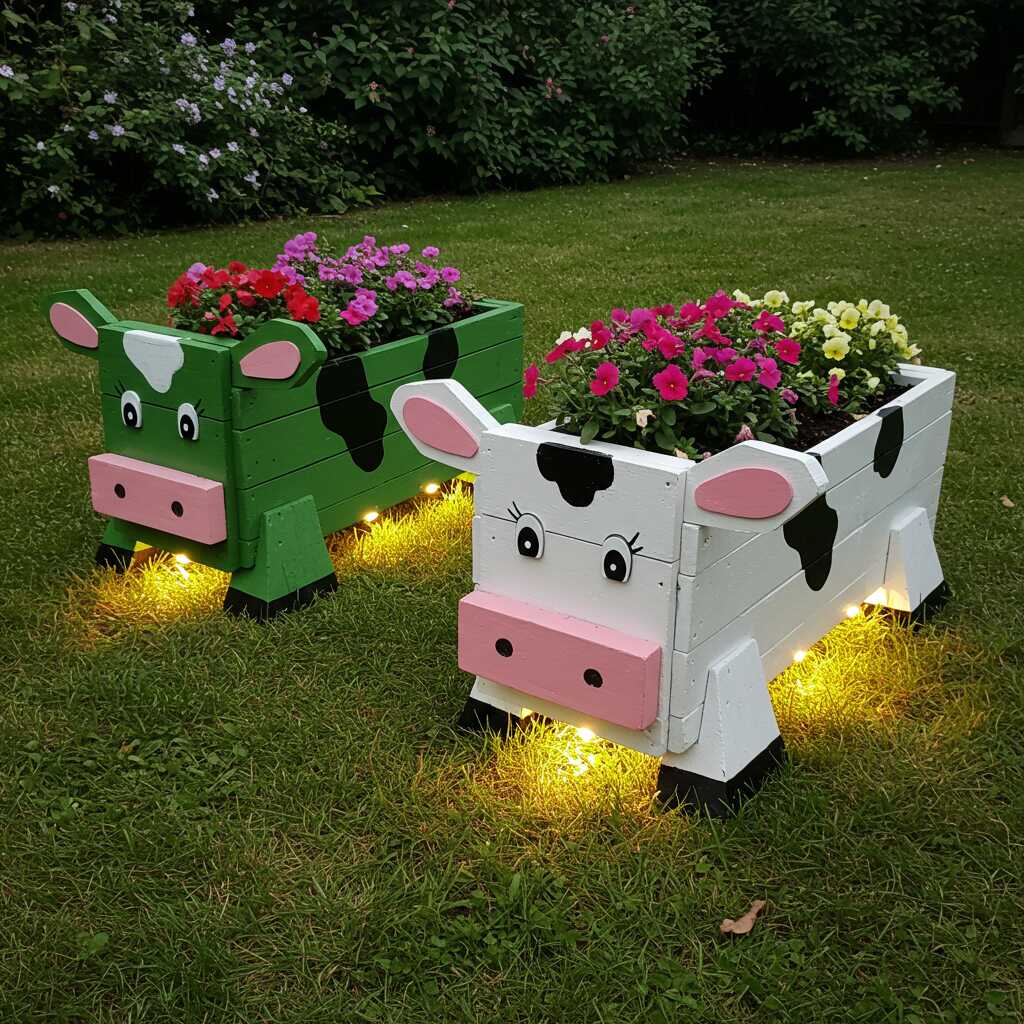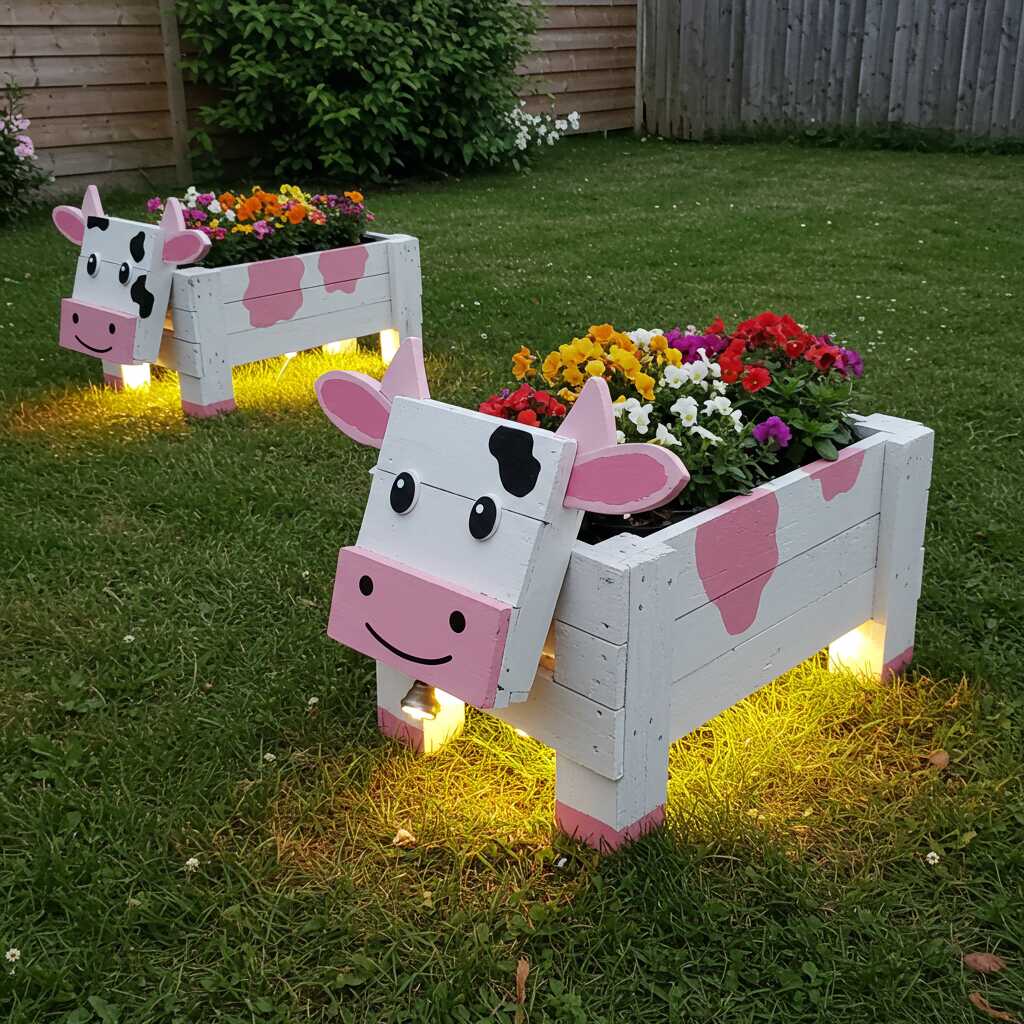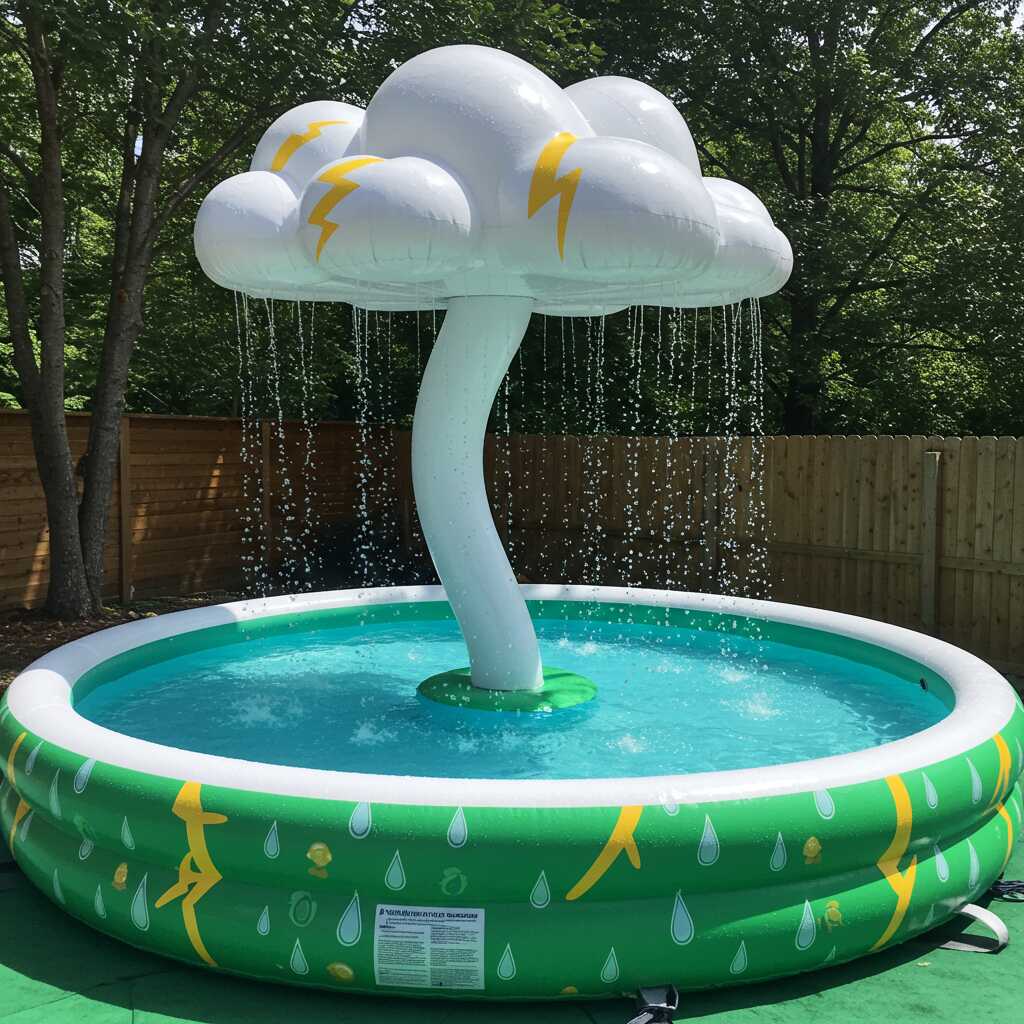Gardens have long served as sanctuaries of tranquility, creativity, and self-expression. From lush greenery to meticulously arranged flower beds, the art of garden design reflects not only our connection to nature but also our desire to infuse outdoor spaces with personality and charm. In recent years, a whimsical yet striking trend has emerged within the world of garden decor: the cow shaped planter. These delightful creations are transforming gardens into playful havens while simultaneously celebrating rural traditions and agricultural heritage. This article delves deep into the phenomenon of cow shaped planters, exploring their origins, appeal, cultural significance, and how they align with broader trends in garden aesthetics.
Cow shaped planters are far more than just quirky vessels for plants; they are a testament to the evolving relationship between functionality and artistic expression in garden decor. Whether crafted from ceramic, terracotta, or recycled materials, these planters embody a harmonious blend of rustic charm and modern innovation. Their growing popularity can be attributed to several factors, including an increasing appreciation for unique, handmade designs and a shift toward personalized gardening styles that reflect individual tastes and values. As we explore this trend further, it becomes evident that cow shaped planters are not merely decorative objects but symbols of a deeper cultural narrative—one that connects us to pastoral landscapes and agrarian roots even as urbanization continues to reshape our environments.
This article will examine the multifaceted rise of cow shaped planters through three distinct sections: an exploration of historical influences and inspirations, an analysis of their role in contemporary garden design, and insights into why they resonate so deeply with modern audiences. By the end of this journey, readers will gain a comprehensive understanding of how these charming additions are redefining what it means to cultivate beauty and meaning in outdoor spaces.

Historical Roots and Inspirations Behind Cow Shaped Planters
The allure of cow shaped planters is deeply intertwined with humanity’s age-old reverence for cows, which have historically symbolized sustenance, fertility, and prosperity across various cultures. In ancient civilizations such as those in India, Egypt, and Europe, cows were not merely livestock but sacred beings whose presence was integral to daily life. For instance, in Hindu mythology, the cow is revered as a maternal figure embodying generosity and abundance, often depicted in art and artifacts. Similarly, in medieval Europe, cattle were central to agrarian economies, inspiring countless depictions in paintings, sculptures, and functional items like pottery. This rich cultural association laid the groundwork for integrating bovine imagery into domestic and utilitarian objects, including planters.
Artisans throughout history have drawn inspiration from rural life to create pieces that celebrate simplicity and natural harmony. During the Arts and Crafts Movement of the late 19th century, there was a resurgence of interest in handcrafted goods that highlighted organic forms and traditional craftsmanship. This movement paved the way for decorative items inspired by pastoral themes, including animal-shaped planters. Cows, with their gentle demeanor and iconic silhouette, became a favored motif, representing a bridge between urban dwellers and the countryside they yearned to reconnect with. Over time, advancements in manufacturing techniques allowed these designs to evolve, blending rustic charm with refined aesthetics.
The enduring appeal of cow shaped planters lies in their ability to evoke nostalgia while maintaining relevance in modern contexts. They serve as reminders of simpler times when life revolved around seasonal rhythms and close-knit communities tied to the land. Whether displayed in sprawling country gardens or compact urban balconies, these planters carry forward a legacy of reverence for nature and tradition, making them timeless fixtures in garden decor.

The Role of Cow Shaped Planters in Modern Garden Design
In today’s dynamic landscape of garden design, cow shaped planters stand out as versatile and imaginative elements that bridge the gap between functionality and aesthetic appeal. These whimsical vessels bring a sense of playfulness to outdoor spaces, turning even the most mundane corners of a garden into focal points of visual intrigue. Their unique form adds an unexpected twist to traditional planting schemes, breaking away from conventional rectangular pots or hanging baskets. By introducing a cow shaped planter into a garden layout, designers and enthusiasts alike can inject personality and humor, creating a space that feels both inviting and memorable.
One of the standout features of cow shaped planters is their adaptability to various garden styles. In rustic-themed gardens, these planters seamlessly blend with wooden fences, stone pathways, and wildflower arrangements, reinforcing the pastoral ambiance. For minimalist or contemporary settings, sleek ceramic versions of cow shaped planters offer a subtle nod to farm-inspired motifs without overwhelming the clean lines and neutral tones characteristic of modern aesthetics. Even eclectic gardens benefit from their charm, as they harmonize effortlessly with mismatched textures, bold colors, and unconventional decor choices. This versatility ensures that cow shaped planters can enhance virtually any design concept while maintaining their distinctive flair.
Beyond their visual impact, cow shaped planters also demonstrate practicality in creative ways. Their hollow interiors provide ample space for planting a wide variety of flora, from cascading succulents to vibrant petunias. Larger models can accommodate small shrubs or herbs, making them ideal for edible gardens. Additionally, some designs feature drainage holes cleverly incorporated into the cow’s body, ensuring proper water flow and preventing root rot. These thoughtful details highlight how cow shaped planters balance utility with artistry, proving that they are not just decorative novelties but functional tools for cultivating greenery.
What sets cow shaped planters apart from other decorative containers is their storytelling potential. Unlike generic pots, they evoke emotions and spark conversations. A visitor might pause to admire how a trailing ivy spills gracefully from the “back” of a ceramic cow or chuckle at the sight of a cheerful sunflower sprouting from its “head.” Such interactions transform the act of gardening into a shared experience, fostering connections between people and their environment. This emotional resonance makes cow shaped planters more than mere accessories—they become cherished components of a living, breathing outdoor sanctuary.

Why Cow Shaped Planters Resonate with Modern Audiences
The widespread appeal of cow shaped planters among modern audiences stems from their unique ability to encapsulate nostalgia, sustainability, and individuality—three pillars that resonate deeply in today’s cultural landscape. Nostalgia plays a particularly powerful role, as many people yearn for simpler times when life was less hurried and more connected to nature. Cow shaped planters evoke memories of bucolic pastures, childhood stories about farm animals, and the comforting rhythms of rural existence. This emotional pull taps into a collective longing for authenticity and grounding, qualities that feel increasingly rare in fast-paced urban environments. By incorporating these planters into their gardens, individuals create personal oases infused with warmth and sentimentality, offering a retreat from the complexities of modern life.
Sustainability is another driving force behind the popularity of cow shaped planters. As awareness of environmental issues grows, there is a heightened emphasis on eco-conscious living and mindful consumption. Many artisans now craft these planters using sustainable materials such as recycled ceramics, biodegradable composites, or upcycled metal scraps. Beyond their construction, cow shaped planters themselves encourage greener practices by promoting plant cultivation, whether it’s growing native flowers to support pollinators or nurturing kitchen herbs to reduce reliance on store-bought produce. Their dual role as decorative pieces and functional tools underscores a harmonious approach to sustainability, appealing to environmentally conscious consumers who seek beauty without compromise.
Individuality rounds out the trifecta of reasons why cow shaped planters captivate modern audiences. In an era dominated by mass production and homogenized design, people crave opportunities to express their uniqueness. Cow shaped planters fulfill this desire by standing out as unconventional yet meaningful choices for garden decor. Each piece often reflects the artisan’s creative vision, resulting in one-of-a-kind designs that range from whimsical and cartoonish to elegant and refined. This diversity allows individuals to curate spaces that authentically represent their personalities, whether they lean toward playful eccentricity or understated sophistication. Moreover, the act of selecting and displaying a cow shaped planter becomes a form of self-expression, enabling gardeners to tell their own stories through carefully chosen elements.
Ultimately, cow shaped planters strike a chord because they embody more than just aesthetic value—they are vessels of emotion, symbols of ecological responsibility, and canvases for personal identity. Their rise in popularity mirrors society’s shifting priorities, where the need for connection, care, and creativity takes center stage. By embracing these planters, modern audiences find joy in cultivating not only plants but also a deeper sense of purpose and belonging within their outdoor spaces.

Inspiring Creativity: Cow Shaped Planters as Catalysts for Garden Innovation
Cow shaped planters are not just decorative accents; they serve as catalysts for creative experimentation in garden design. Their playful shapes encourage gardeners to think outside the box (or pot) and approach planting with a sense of adventure. For instance, these planters provide an opportunity to experiment with unconventional combinations of plants, such as pairing trailing vines with upright blooms to mimic the natural movement of a grazing cow or filling the planter with edible herbs to create a “milk-and-honey” themed display. This level of personalization transforms gardening from a routine activity into an artistic endeavor, where every choice reflects the gardener’s imagination and ingenuity.
Beyond planting techniques, cow shaped planters also inspire innovative placement strategies within a garden. Some enthusiasts position them strategically along pathways to guide visitors through a whimsical journey, while others cluster multiple cow shaped planters together to create a “herd,” evoking the charm of pastoral scenes. In vertical gardens or small spaces, wall-mounted versions of cow shaped planters add dimension and intrigue, proving that even limited areas can benefit from bold, creative touches. By challenging traditional notions of symmetry and arrangement, these planters empower gardeners to redefine what constitutes beauty in outdoor spaces.
The versatility of cow shaped planters extends beyond aesthetics—they also foster mindfulness and intentionality in gardening practices. As individuals select plants, arrange soil, and care for their greenery housed within these bovine vessels, they engage in a meditative process that connects them to the cycles of growth and renewal. The act of nurturing life within a uniquely shaped container amplifies the joy derived from watching plants thrive, reinforcing the therapeutic benefits of gardening. Furthermore, tending to a cow shaped planter often sparks curiosity about sustainable practices, such as composting or water conservation, encouraging gardeners to adopt eco-friendly habits that align with their values.
Ultimately, cow shaped planters embody the spirit of innovation in gardening by inviting us to embrace experimentation, reimagine spatial dynamics, and cultivate mindfulness. They remind us that gardens are living canvases, ever-evolving works of art shaped by our hands and hearts. Whether used as standalone statement pieces or integrated into larger compositions, these planters challenge us to push boundaries and celebrate the boundless possibilities of creative expression in nature.

Conclusion: Embracing the Charm of Cow Shaped Planters
The ascent of cow shaped planters in garden decor represents far more than a fleeting fascination with novelty—it embodies a profound intersection of tradition, creativity, and modern sensibilities. These enchanting vessels have transcended their humble origins to become symbols of how we connect with nature, honor cultural legacies, and express individuality within our outdoor spaces. Through their whimsical forms and practical functionality, cow shaped planters remind us of the simple joys found in blending artistry with everyday life. They invite us to reimagine gardens as extensions of ourselves, where each element tells a story and fosters a deeper bond with the environment. As this trend continues to flourish, it reaffirms the timeless appeal of infusing outdoor sanctuaries with charm, meaning, and personality.


